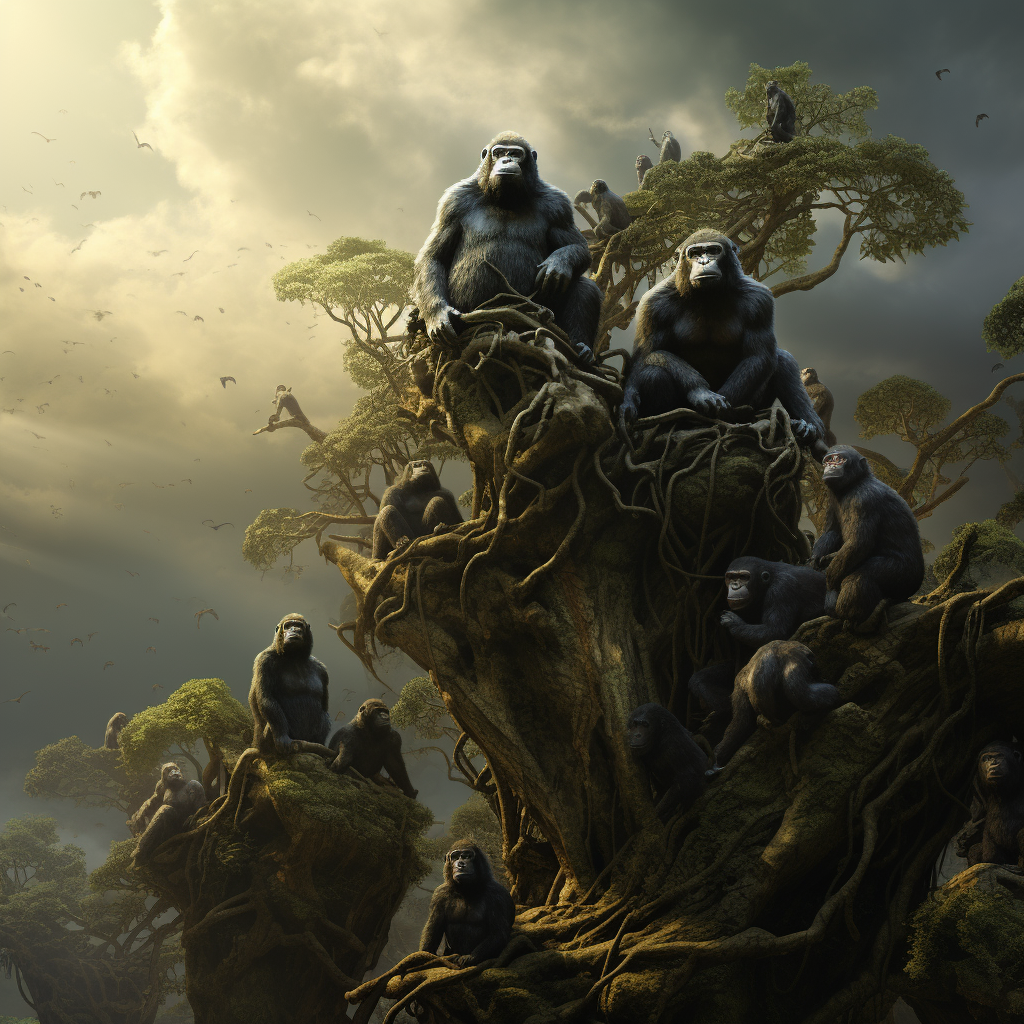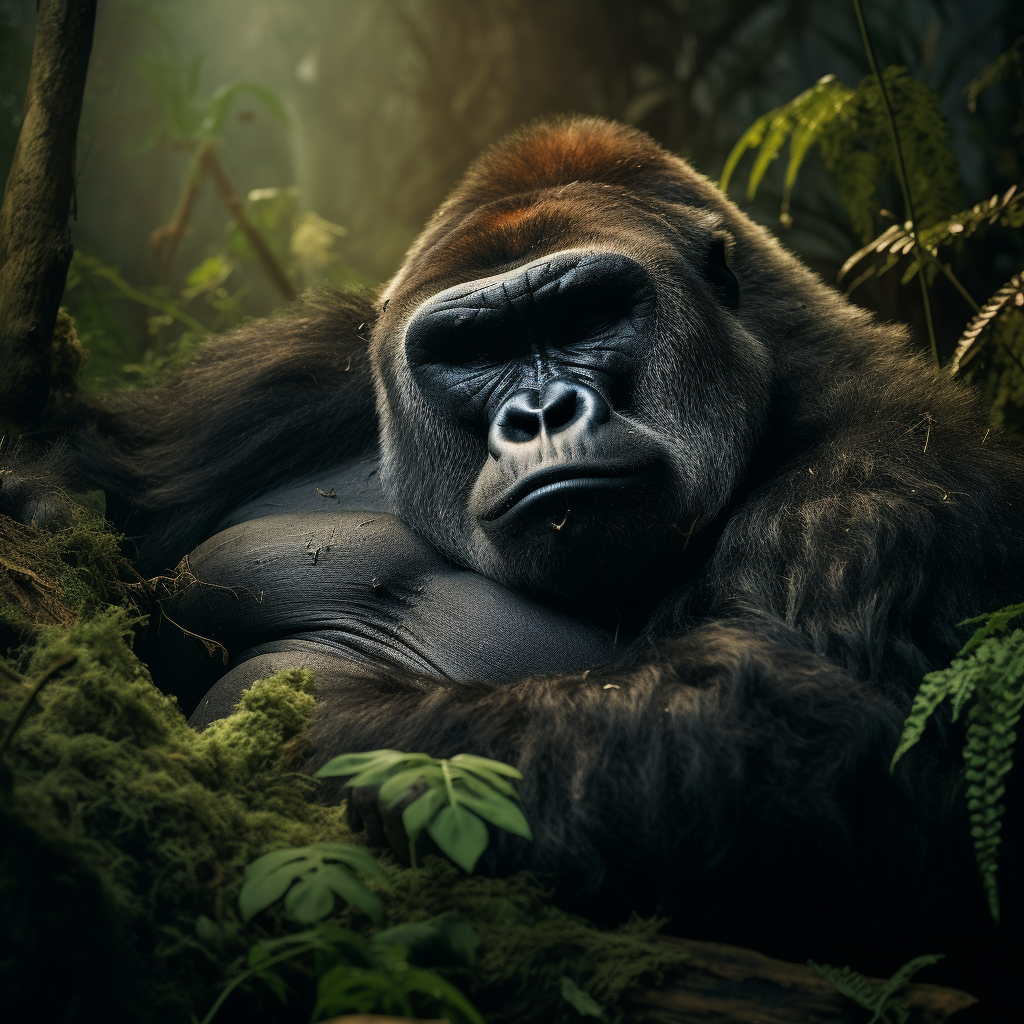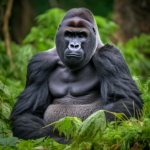Gorillas have captivated us with their strength and intelligence for eons. How long have they been around? Studies suggest around 9-10 million years! Scientists peered into the past to uncover their origin using DNA samples and cutting-edge technology.
Their social structures are remarkable and complex. Facial expressions, body postures, vocalizations, and gestures are all part of their communication system. To better understand them, researchers suggest studying their subspecies in different regions across Africa.
It’s essential to foster conservation efforts to preserve gorilla populations. Supporting local communities near their habitats with sustainable practices can help protect them and ensure human well-being. From knuckle-walkers to meme-lovers, gorillas have come a long way – just like us humans!
Takeaways
- Gorillas have existed for millions of years, with the earliest known gorilla fossils dating back to around 9 million years ago.
- The evolution of gorillas can be traced back to a common ancestor they share with humans and chimpanzees.
- There are two species of gorillas: the eastern gorilla and the western gorilla, each with two subspecies.
- Gorillas are the largest primates and are known for their strength and size.
- Gorillas are primarily herbivores, with their diet consisting mainly of leaves, stems, and fruits.
- Gorillas live in social groups called troops, led by a dominant silverback male.
- Gorillas are currently facing threats such as habitat loss, poaching, and diseases, which have led to a decline in their population.
- Conservation efforts are being made to protect gorillas and their habitats, including establishing national parks and implementing anti-poaching measures.
- Studying gorillas can provide valuable insights into primate evolution, behavior, and conservation.
Evolution of Gorillas

Gorillas have been around for millions of years! Their remarkable strength and intelligence make them fascinating. Scientists have studied their genetics and fossils to trace their evolution from a common ancestor with humans and other great apes. This split happened 10 million years ago, leading to two different lineages – gorillas and humans.
Gorillas have adapted to many environments over time, and now belong to the family Hominidae – which includes orangutans, chimpanzees, bonobos, and humans. Within this family, gorillas are in the genus Gorilla – with two species: Eastern and Western gorillas.

Sadly, these majestic creatures have faced many threats. From deforestation to poaching, conservation efforts are needed to ensure their survival. Gorillas will continue to leave a footprint in history for many years to come.
Gorillas in the Fossil Record
Gorillas are part of the genus Gorilla, with two species – Gorilla beringei and Gorilla gorilla. They’ve been around for millions of years! Fossils provide evidence of their existence. For example, a fossil known as “Chororapithecus abyssinicus” was discovered in Ethiopia and dates back around 10 million years.
Comparing gorillas to other primates is like comparing a tank to a tricycle. One is strong and powerful, while the other is unsteady and weak.
Comparisons with Other Primates
Gorillas are impressive creatures. To compare them to other primates, we look at size, behavior, and habitat. Gorillas are larger than chimpanzees, who are more compact and resourceful. Orangutans are mighty, but solitary. Plus, gorillas have a herbivorous diet, unlike the omnivorous chimps and orangutans. Additionally, their communication abilities using sign language amaze researchers.
Pro Tip: When viewing primates, stay back! Don’t feed or approach them. It’s important to admire them while preserving their habitats for future generations. Gorillas have been around for ages!
Gorillas in the Modern World

Gorillas are an essential part of the world’s ecosystem. Three species of gorillas are known to live in Africa: Western Gorillas, Eastern Gorillas, and Cross River Gorillas. Each has their own unique characteristics and habitats.
These gentle giants share similarities like social structures, herbivorous diets of leaves and fruits, and groups led by a male silverback. They’ve even been seen using tools like sticks and rocks to crack open nuts and defend themselves!
We must protect gorilla habitats from deforestation and poaching to ensure their survival. Supporting conservation organizations that focus on gorilla protection, promoting eco-tourism, and implementing stricter laws against wildlife trade can help us make a difference. Let’s join forces to protect gorillas for future generations – together, we can secure a bright future for both humans and our primate counterparts.
Frequently Asked Questions
FAQs about How Long Have Gorillas Existed:
Q: How long have gorillas existed?
A: Gorillas have existed for millions of years. The exact duration of their existence is difficult to determine, but fossil evidence suggests they have been around for about 7 to 8 million years.
Q: Are gorillas an endangered species?
A: Yes, gorillas are considered critically endangered. Habitat loss, poaching, and diseases have significantly impacted their population. It is crucial to protect and conserve these magnificent creatures.
Q: How do we know how long gorillas have existed?
A: Scientists determine the existence of gorillas through various methods, including analyzing fossils, genetics, and studying their evolutionary history. These techniques help estimate the approximate timeline of gorilla evolution.
Q: Have gorillas always looked the same?
A: Gorillas have undergone evolutionary changes over millions of years. While their basic physical characteristics have remained relatively consistent, there have been adaptations and variations within different gorilla species.
Q: Are gorillas related to humans?
A: Yes, gorillas are one of the closest relatives to humans. We share a common ancestor with them, and our genetic makeup is remarkably similar. Gorillas and humans are both primates belonging to the family Hominidae.
Q: Will gorillas continue to exist in the future?
A: The future of gorillas depends on our collective efforts to protect their habitats, address poaching issues, and ensure conservation measures. With proper conservation strategies, we can strive to secure their existence for generations to come.
Conclusion
How long have gorillas been on Earth?
Scientists have uncovered that they’ve been around for millions of years. They began during the Miocene epoch, which lasted from 23 million to 5.3 million years ago. Gorillas adapted and survived this challenging time.
Recent genetic sequencing has shown that there are four subspecies of gorillas. These are: Western lowland, Cross River, Eastern lowland (Grauer’s gorilla), and Mountain gorillas. Each has unique characteristics and different environmental needs.
The Smithsonian’s National Museum of Natural History holds a vast collection of primate fossils. It helps us learn about gorilla and other primate evolution and existence. This treasure trove is still contributing to scientific research today.




